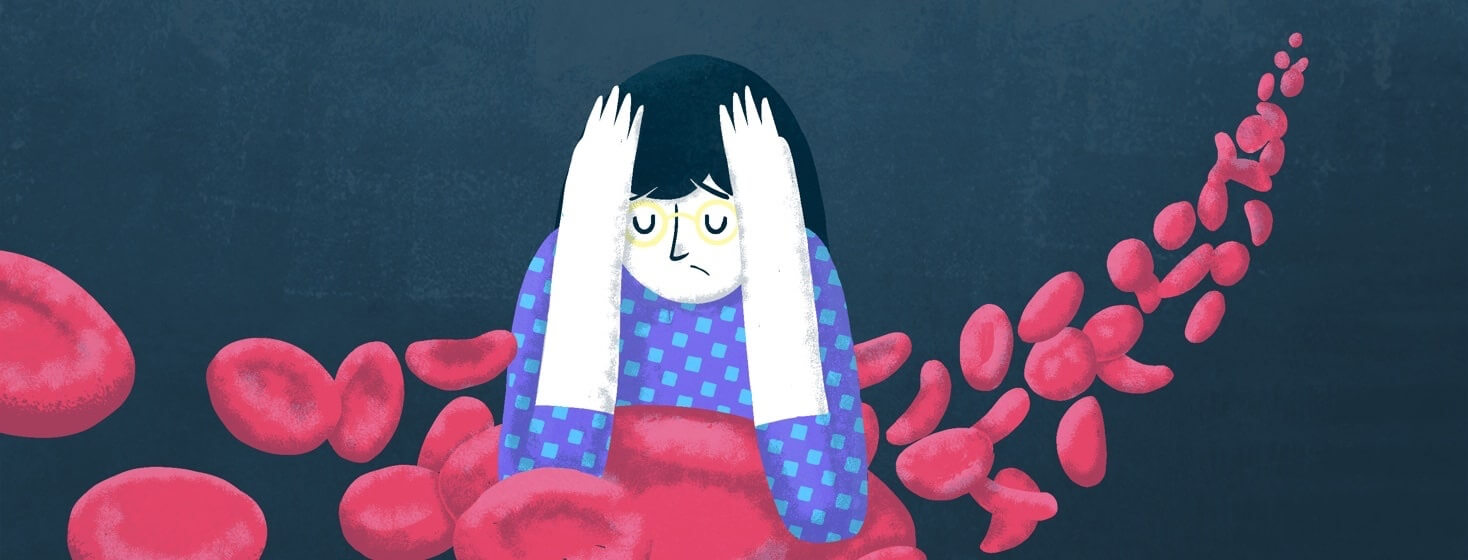What Is Polycythemia?
While it is not as common today as in the past, some people with COPD may develop polycythemia.
So, what is polycythemia? Why do some people with COPD develop it? What does it mean if you have it?
Here’s all you need to know.
What is polycythemia?
In your blood, you have red blood cells. These are cells shaped like donuts. In the center of the cell is a hemoglobin molecule.
When you inhale oxygen, your lungs transport it to your bloodstream. Once in your bloodstream, oxygen binds with hemoglobin.
When this happens, your blood turns a bright red color. This makes your skin a pinkish color.
Red blood cells carry hemoglobin/oxygen to your body's cells. Eventually, the oxygen will leave the hemoglobin molecule and enter a cell.1
How many red blood cells you have is measured by your hemoglobin level. And this is determined by a simple test called a complete blood count (CBC). Your hemoglobin level varies based on various factors, such as your sex.2
Here are typical hemoglobin values based on sex:
- Males: Between 13.2 and 16.6 grams per deciliter
- Females: Between 11.6 and 15 grams per deciliter
Your hematocrit level may also measure red blood cells. A CBC also determines this. Hematocrit determines how thick your blood is with cells, including red blood cells. This value is often used to determine your red blood cell count. For example, if your hematocrit is high, so will your red blood cell count.2,4
Like hemoglobin levels, hematocrit may vary based on various factors, such as your sex.2,4
Here are normal hematocrit values based on sex:4
- Males. Between 38.3 percent and 48.6 percent
- Females. Between 35.5 and 44.9 percent
Polycythemia is when you have more red blood cells than average. This is measured by your hemoglobin and hematocrit levels.
So, if your hemoglobin and hematocrit levels are elevated, you may be diagnosed with polycythemia.2
Why do people with COPD develop polycythemia?
About 6-10 percent of people with COPD develop polycythemia. COPD causes polycythemia and is generally referred to as “secondary polycythemia.”5
It is caused by chronically (always low) oxygen levels. What happens is that our bodies are great at compensating. This is especially true when your oxygen levels are low.
Your body will do everything possible to draw in more oxygen to keep your oxygen levels normal and healthy.
This way, your body will respond to chronically (consistently low) oxygen levels. So, if your oxygen levels are low and continue to be low daily, your body will gradually make more and more red blood cells. The hope is that if your body sends out more red blood cells, they will be able to draw in more oxygen to your blood.
What does it mean if you are diagnosed?
The problem here is that creating extra red blood cells does not always solve the problem.
This is because your lungs will only allow so much oxygen to get to your blood. So this means that you will have extra red blood cells, many of which will not carry an oxygen molecule. So, even if your oxygen levels remain normal, your skin may develop a bluish tinge to it (called cyanosis).5
Of course, people with polycythemia may also have low oxygen levels. This may also cause your skin to have a bluish tinge.5
So, these are some things your doctor will want to monitor.
Polycythemia may also cause some complications. So your doctor may take precautions to prevent or treat these if they develop.
With extra red blood cells, your blood will be abnormally thick. So this increases your risk for blood clots (also known as venous thromboembolism).5
It may also increase your risk of developing pulmonary hypertension. This is where you develop high blood pressure inside your lungs. I describe this in further detail in my post: “What is Pulmonary Hypertension.”
What are the treatment options?
This is a testament to modern wisdom and technology. Today, we have access to oxygen equipment that allows you to inhale supplemental oxygen at home and on the road.
This is often referred to as supplemental oxygen therapy or home oxygen therapy. So, since the advent of home oxygen therapy, secondary polycythemia rates have significantly decreased among the COPD community.
The good news is that rates of secondary polycythemia due to COPD have significantly declined since the advent of home oxygen therapy. Thankfully, doctors are getting better at diagnosing COPD and determining which COPD patients will benefit from home oxygen therapy.
Utilizing home oxygen assures you will inhale enough oxygen to maintain your oxygen levels. This prevents polycythemia.
This is another benefit of home oxygen therapy.

Join the conversation